|
|
   
| Review: - Litepanel's Hybrid LED Light |
December 2010
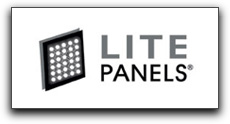 Litepanel's Hybrid LED Light
Litepanel's Hybrid LED Light
for Camera's and Camcorders
http://www.litepanels.com - msrp $525.00
Review by Steve Douglas
The necessity and importance of lighting any shot, be they still images or video frames is an absolute. I am often surprised by new videographers who, once they purchase their first camcorders or DSLRs and underwater housings, ask me whether getting underwater lighting systems is really necessary. I shouldn't be surprised, after all, this is how and what the new shooter needs to know in order to learn. After all this time I'm still surprised.
Litepanels has been a major player for the introduction and use of LED lights for on camera video lights. First with their Litepanels Micro, soon to be followed by its somewhat larger and more durable Litepanels MicroPro, and now, for both camcorders and still imaging cameras, comes the MicroPro Hybrid.
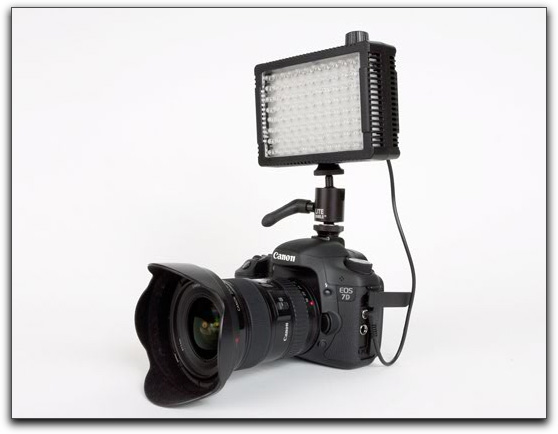
The MicroPro Hybrid is the same exact size and weight as the MicroPro at 5.5" x 3.75" x 1.5", is powered by the same 6 AA batteries producing the same 5600° color temperature at the same power equivalent of 50 watts. Power consumption is really quite good as the 6 batteries will provide about an hour and a half of continuous usage. I prefer to use rechargeable batteries but the Hybrid works just fine with standard batteries as well.
In fact, there really are no differences between the two models except for the most important one. The MicroPro Hybrid comes with dual purpose uses for both camcorder and DSLR users. Using the Hybrid in its Continuous Mode allows the videographer to provide a good amount of fill light for those run and gun interviews with the Hybrid secured safely on the camcorders hot shoe or on an adjacent C stand. According to Litepanels, the newly built in 'Flash' feature produces a 400% brighter burst for still images. This percentage is actually a 4 times the brightness over the highest output you have your dimmer control knob set to.
Like all LED lights, the MicroPro Hybrid produces almost no heat at all making things very comfortable for your subjects and allowing you to handle it without fear of burning yourself. The Hybrid's knob dimmer remains as flicker free as its predecessor permitting you to quickly go from 100% down to 0% with a minimum of color shift. It would be helpful if there was some sort of markings on the dial making it easer to return to the same power setting you may have used from one shot to the next. The Litepanels Hybrid retains the same improved integrated filter holder and comes with 3 color and diffusion gels as well as a holder on the back of the unit for carrying extra gels.
The Litepanel's Hybrid comes supplied with a nice padded carrying/protection case as well as an all in one strobe sync cable, which several photographers I showed it to, thought could have been a bit longer. While one of the LEDs in my test unit was somehow bent to the side, it continued to produce light and was not a problem. Perhaps it had been inserted at the factory improperly. This is the first time I have seen this in any of the Litepanels.
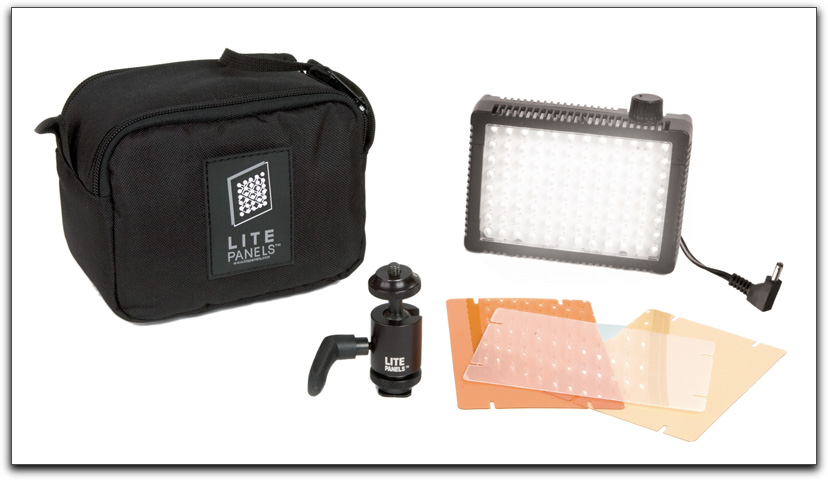
Also included is a high quality ball head shoe mount which has a "clutch" that allows you to pull out the handle and rotate the Hybrid light to different positions. Considering the cost of the Hybrid, an included AC Power Adapter should also be included but is not. The power adapter, along with a base plate for off-camera use, and an underwater housing, are optional purchases and I did not have the opportunity to use these acccessories.
In use, the MicroPro Hybrid takes a bit of getting used to in that the flash mode does not communicate with your camera. Therefore, a separate external 'flash' meter will be of significant help for the photographer. However, once you get accustomed to the Hybrid's output capabilities and your camera working as a unit, you may find their use to become almost instinctive.
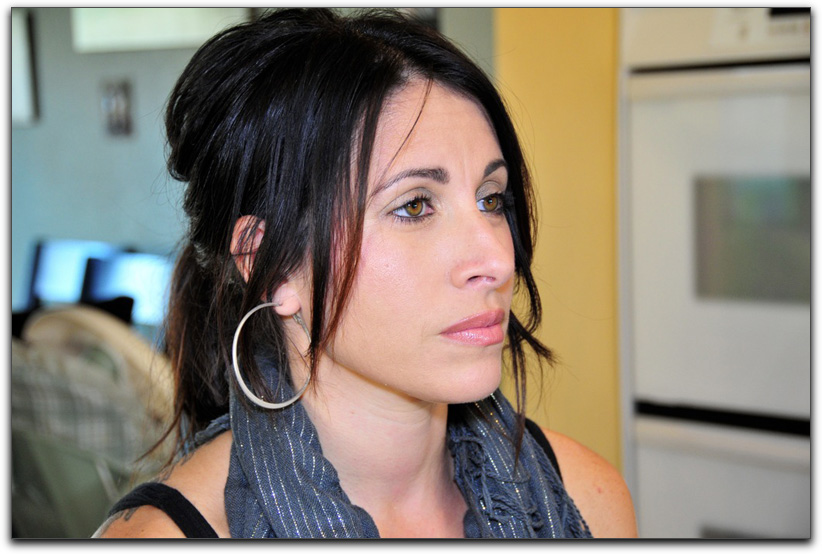
Taken only 4 feet away on a Nikon D-300, the Litepanel's Micro Hybrid produced a nice even light.

With the output of the Hybrid turned down a touch, this image produced warmer skin tones.
No Photoshopping or any other color corrections were made to either of these two photos.
Photos by Randy Siegel.
The Litepanel's MicroPro Hybrid does have its limitations in regards to the amount of power it produces and the throw of the light itself. It is good for portraits but lacks the power to light up a room.
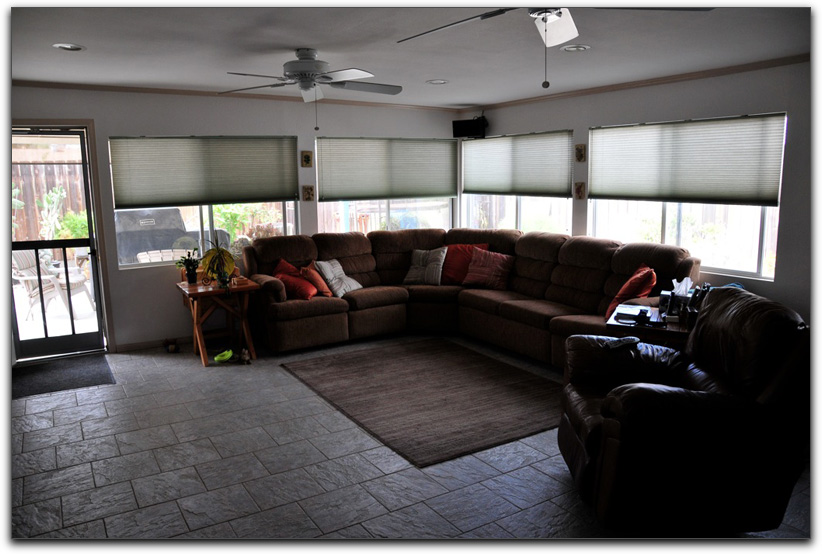
Lit with the full power of the MicroPro Hybrid, the room is still quite dark. No external flash meter was used.
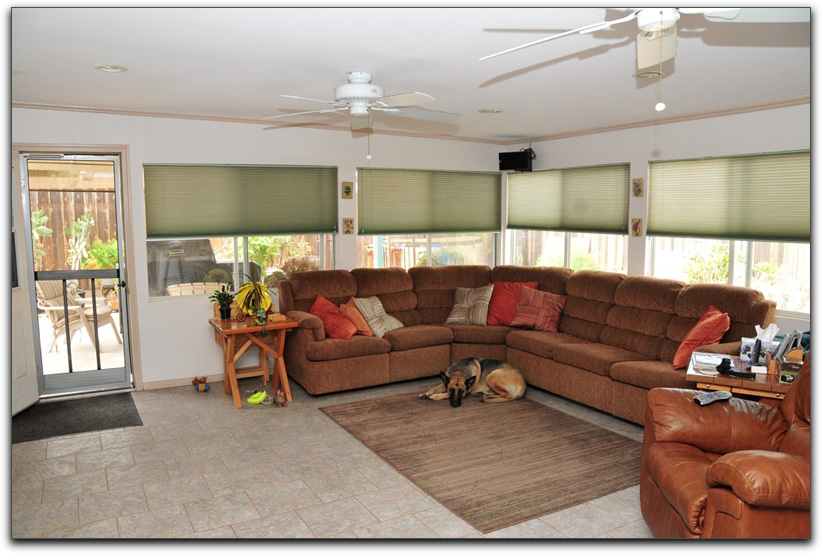
The same room lit by a Nikon SB-800 Flash atop a Nikon D-300 hand held shot at a shutter speed of 60.
While there is a definite click when turning on/off the Hybrid unit, an additional 'on light' would be a welcome feature as I found it easy to forget that the Hybrid was turned on when the knob was turned to 0% power. A light would prevent the inadvertent draining of batteries.
All in all, the Litepanel's MicroPro Hybrid is really a great little light for either the videographer or photographer on the move. It is very light in weight, causing no wrist weariness; and you can easily forget it is there. That it can also can serve very well in other capacities as an excellent fill or back light makes the MicroPro Hybrid a useful asset for videographer and photographer alike.
 Steve Douglas is a certified Apple Pro for Final Cut Pro 7 and underwater videographer. A winner of the 1999 Pacific Coast Underwater Film Competition, 2003 IVIE competition, 2004 Los Angeles Underwater Photographic competition, and the prestigious 2005 International Beneath the Sea Film Competition, where he also won the Stan Waterman Award for Excellence in Underwater Videography and 'Diver of the Year', Steve was a safety diver on the feature film "The Deep Blue Sea", contributed footage to the Seaworld Park's Atlantis production, and productions for National Geographic and the History channels. Steve was a feature writer for Asian Diver Magazine and is one of the founding organizers of the San Diego UnderSea Film Exhibition. He is available for both private and group seminars for Final Cut Pro and leads underwater filming expeditions and African safaris with upcoming excursions to the Cocos Islands, Costa Rica, Lembeh Straits, Indonesia, and Wakatobi. Feel free to contact him if you are interested in joining Steve on any of these exciting trips. www.worldfilmsandtravel.com Steve Douglas is a certified Apple Pro for Final Cut Pro 7 and underwater videographer. A winner of the 1999 Pacific Coast Underwater Film Competition, 2003 IVIE competition, 2004 Los Angeles Underwater Photographic competition, and the prestigious 2005 International Beneath the Sea Film Competition, where he also won the Stan Waterman Award for Excellence in Underwater Videography and 'Diver of the Year', Steve was a safety diver on the feature film "The Deep Blue Sea", contributed footage to the Seaworld Park's Atlantis production, and productions for National Geographic and the History channels. Steve was a feature writer for Asian Diver Magazine and is one of the founding organizers of the San Diego UnderSea Film Exhibition. He is available for both private and group seminars for Final Cut Pro and leads underwater filming expeditions and African safaris with upcoming excursions to the Cocos Islands, Costa Rica, Lembeh Straits, Indonesia, and Wakatobi. Feel free to contact him if you are interested in joining Steve on any of these exciting trips. www.worldfilmsandtravel.com
copyright © Steve Douglas 2010
This article first appeared on www.kenstone.net and is reprinted here with permission.
All screen captures and textual references are the property and trademark of their creators/owners/publishers.
|